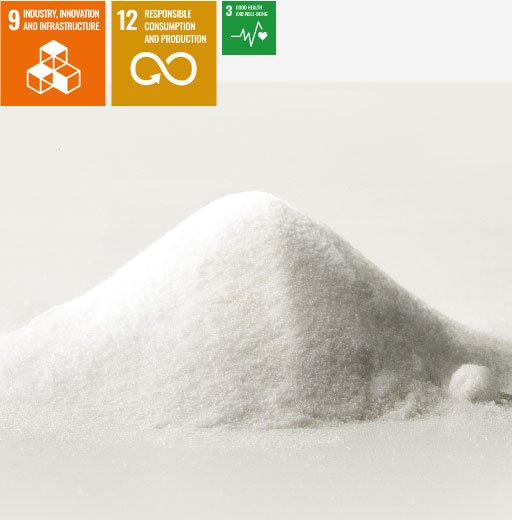Wet Blasting and SDGs
Explaining environmental improvement by "wet blasting"

Environmental improvement through “wet blasting”
Since its founding, Macoho has been working to protect the global environment by developing environmentally friendly technologies that reduce waste and wastewater, save labor, and curtail energy consumption. Here, we introduce our achievements in reducing environmental impact and energy conservation that we deliver to our customers.
Equipment-Processing Technology
Wet Blasting, which does not use chemicals or organic solvents, utilizes these features to reduce waste and waste water and use energy effectively.
- Technology that simultaneously performs blasting and degreasing cleaning without using any organic solvents.
- Single-liquid lubricant application without pickling or bonderizing prior to cold forging.
- Nano-level processing as a chemical treatment alternative.
- Blasting technology without compressed air.
- Equipment that can be used outdoors without absorbing or scattering the slurry.

Fundamental System Technology
Wet Blasting can reduce waste and wastewater and improve the working environment by improving systems and processes.
- Wet environment ensures dust-free equipment.
- Recycling the slurry reduces waste and wastewater.
- Automated equipment helps reduce manpower.
- Cyclone water-classification system ensures effective use of water.
- Long-life replacement parts made of highly durable materials.
- Wastewater is reduced by collecting the coagulated sludge.
- Macoho's proprietary exhaust system ensures a cleaner exhaust.
- Water quality improvement system - Reduction of water consumption (under development)

Abrasive Development
One of wet blasting's components is to reduce waste and wastewater by developing abrasives.
- Supply of abrasives that can be recycled as valuable resources after blasting.
- Reduction of waste by using water-soluble materials (under development).
- Longer life thanks to high-hardness abrasives with extremely low crushing levels.
- Use of plant-derived materials that can be disposed of as general waste (under development).
- Dust prevention by supplying a fine-abrasive slurry (under development).
- Recycling of used abrasives (under development).



